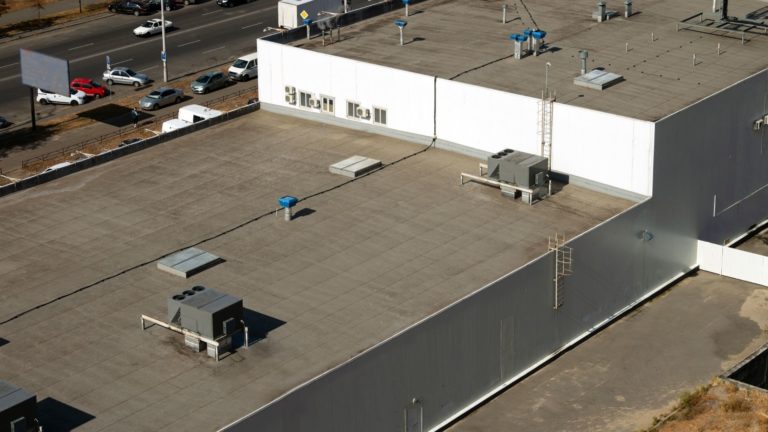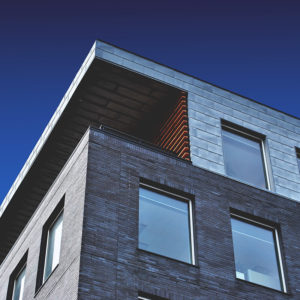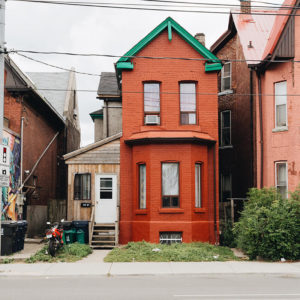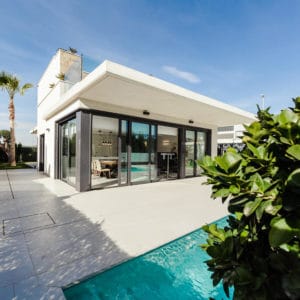Quality Built Up Roofing in NYC

Built-up roofing (BUR) is a type of composite roof membrane. Built up roofs are made from an asphalt or rubber base sheet, called the “wearing course,” with a layer of bituminous felt, and then topped off by an outer waterproofing barrier and insulation material. They are often used in place of BURs because they have lower installation costs than single-ply membranes do.
Built up roof membrane design was introduced in 1923 in France by the French company “Nouvelle Société Anonyme de Gomtrie-Chapron et Cie.” Built up roofing is also known as Built Up Rubber Roofs and Built Up Asphalt Roofs. Built up roofing is a type of composite material that provides protection against leaks. Built Up Roofing often protects churches, schools, and hospitals because they require little maintenance and can withstand extreme temperatures like heatwaves or cold snaps.
Benefits of BUR
The advantages of using Built Up Roofing is that you won’t have to worry about getting leaks from your roof because it will be protected by Built Up Roofing. It is a commercial roofing type that will protect your home from leaks and other types of water damage. Built Up Roofing is also beneficial because it can withstand extreme temperatures, and when you need to repair any section of the Built Up Roofing all you have to do is replace that particular piece instead of replacing the entire thing like with some other types of roofs.
Built-up roofs are attached to your deck or substrate by attaching the “wearing course” then applying a layer of bituminous felt from one edge. Built Up Roofing is also known as Built-Up Rubber Roofs and Built-Up Asphalt Roofs.
BUR Installation
BUR is a great option for a roof because it is easy to install, doesn’t need much maintenance and can withstand extreme temperatures. Built up roofs have an asphalt or rubber base sheet with bituminous felt that are topped off by an outer waterproofing barrier and insulation material.
Built-up roofs are installed by attaching the “wearing course” to a deck or substrate, then applying a layer of bituminous felt from one edge. This process is repeated until there is enough wearing surface that will protect the inner materials and provide good protection against leaks.
The benefits of Built Up Roofing include being affordable when it comes to installation, they don’t need a lot of maintenance, it is easy to repair and replace. Built Up Roofing also has the ability to withstand extreme temperatures such as heatwaves and cold snaps.
Built-up roofing may be retrofitted on existing buildings or installed new construction. The base sheet should have good adhesion properties for attachment to the substrate or deck. Built-up roofs are generally only used for flat roofs, as they cannot be installed on sloped roofs due to their need of a solid base sheet and bituminous felt.
How Built-Up Roofing Systems Are Assembled
Venting base sheets are specially-designed for use with moisture cure materials such as light weight insulating concrete or poured gypsum. Homeowners can rest easy because they don’t have to worry about these two different types of decks being outdone by water damage, which is why venting felts should be used more often than regular ones on nailable surfaces like plywood boards! The differences between the 3 grades – Type I < II = III> IV and V-, boil down simply into strength: while fiber glass offers high quality performance but costs an arm and leg (literally), organic fibers offer good affordability without compromising too much durability whereas polyester has been seen more commonly in budget products due to its low cost.
– Built Up Roofing is a type of composite material that provides protection against leaks.
– Built up roofs are installed by attaching the “wearing course” to a deck or substrate, then applying a layer of bituminous felt from one edge. This process is repeated until there is enough wearing surface that will protect the inner materials and provide good protection against leaks.
– The benefits of Built Up Roofing include being affordable when it comes to installation, they don’t need a lot of maintenance, it is easy to repair and replace. Built Up Roofing also has the ability to withstand extreme temperatures such as heatwaves and cold snaps.
Built-up roofing may be retrofitted on existing buildings or installed new construction. The base sheet should have good adhesion properties for attachment to the substrate or deck. Built-up roofs are generally only used for flat roofs, as they cannot be installed on sloped roofs due to their need of a solid base sheet and bituminous felt.
Differences Between Built-Up Roofing System Materials
Base sheets are usually the first piece of Built-Up Roofing material installed and can be mechanically fastened to a deck or substrate. Next come felts, which may either require hot asphalt (on roofs) or coal tar adhesives; these need about 25 pounds per 100 square feet when using one type for installation between each layer’s planks/plys before they’re covered with topsoil materials like leaves etc., depending on where you live—though it typically ranges from 20lbs all way up there near 35 lbs
Last is the surfacing. With a cap sheet, the same amount of bitumen or lap cement is used to install the cap sheet as is used to install the plies. With gravel or slag, a flood coat of about sixty pounds per square of asphalt or seventy pounds per square of coal tar is applied and 400 – 500 pounds per square of gravel or 300 – 400 pounds per square of slag is embedded. Emulsion surfacings will vary. Usually it’s around three gallons per square that is used. If emulsion is what is preferred, an aluminum reflective coating should be applied after the emulsion cures to help reflect damaging UV rays.
Uses of Built-Up Roofing Systems
A BUR can be installed over any type of roof deck as long as it’s sealed with a proper substrate. To install one onto wood or steel roofs, we recommend using rosin sheets and base layers first that have been prepared for different materials based on what is being applied to them. With Polyiso insulation (known more commonly by its acronym “iso”), manufacturers should always be consulted before installation because there are specific guidelines about how much thickness they require – 22 gauge minimum in most cases but some types may need up-to 35 pounds per square foot depending upon application requirements
TCI Manhattan Roofing Repair Services NYC provides professional BUR roofing services 24/7!
OUR SERVICES

ROOFING SERVICES

ASPHALT SHINGLES

FLAT RUBBER ROOFING

CONCRETE SERVICES

DRIVEWAYS REPAIRS

MASONRY SERVICES
CLIENT TESTIMONIALS



GET IN TOUCH WITH US
OFFICE ADDRESS
244 5th Ave #276. New York, NY 10001
PHONE NUMBER
(866) 608-0284
E-MAIL ADDRESS
tahirinc@gmail.com








